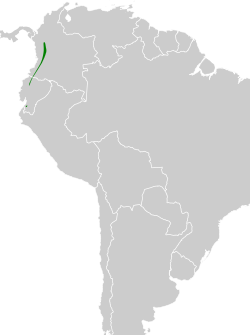| Rufous-throated tanager | |
|---|---|
 | |
| Scientific classification | |
| Kingdom: | Animalia |
| Phylum: | Chordata |
| Class: | Aves |
| Order: | Passeriformes |
| Family: | Thraupidae |
| Genus: | Ixothraupis |
| Species: | I. rufigula |
| Binomial name | |
| Ixothraupis rufigula (Bonaparte, 1851) | |
 | |
The rufous-throated tanager (Ixothraupis rufigula) is a species of bird in the family Thraupidae. It is found in Colombia and Ecuador.
Its natural habitats are subtropical or tropical moist montane forests and heavily degraded former forest.
